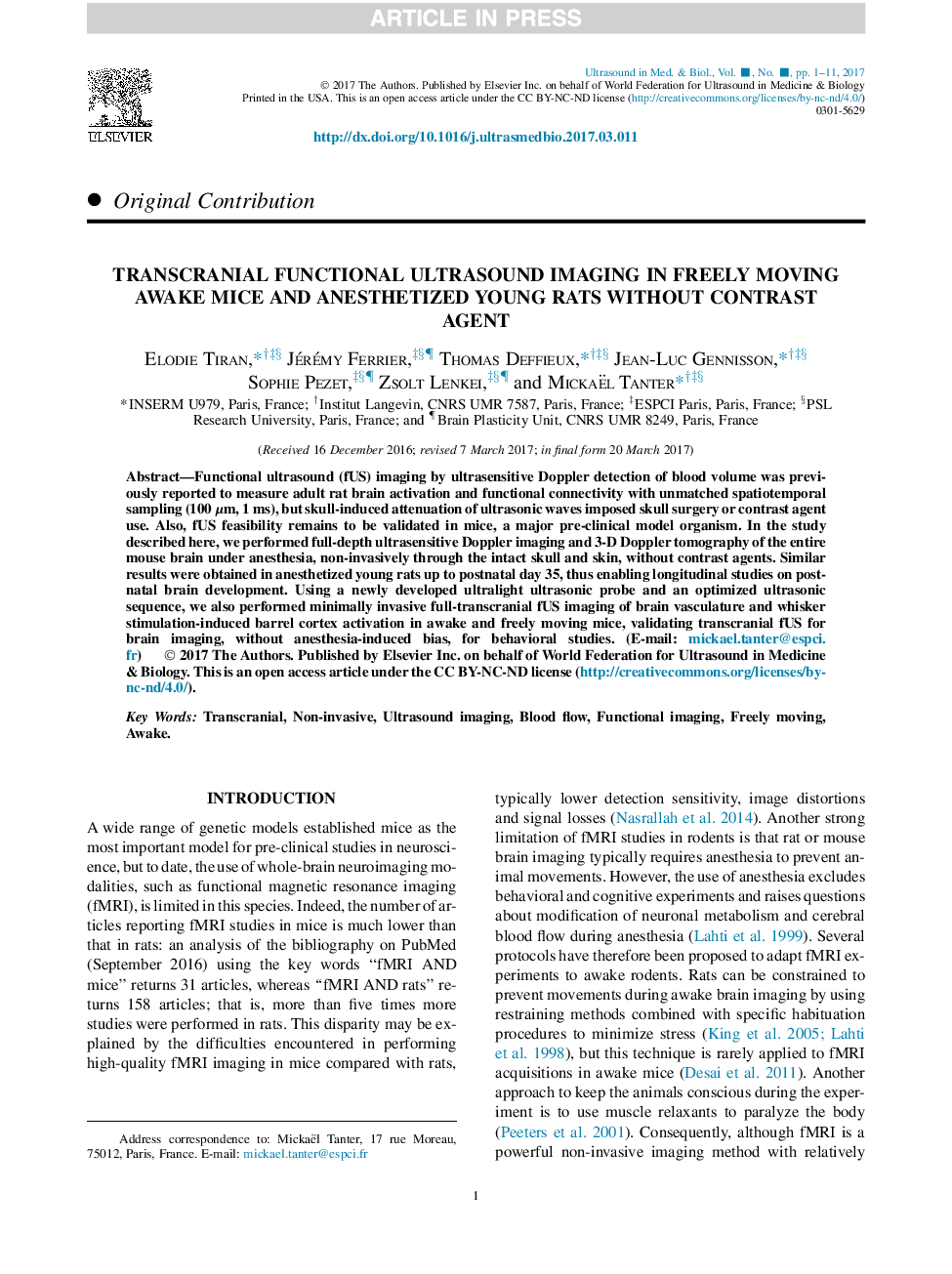| Article ID | Journal | Published Year | Pages | File Type |
|---|---|---|---|---|
| 5485679 | Ultrasound in Medicine & Biology | 2017 | 11 Pages |
Abstract
Functional ultrasound (fUS) imaging by ultrasensitive Doppler detection of blood volume was previously reported to measure adult rat brain activation and functional connectivity with unmatched spatiotemporal sampling (100 μm, 1 ms), but skull-induced attenuation of ultrasonic waves imposed skull surgery or contrast agent use. Also, fUS feasibility remains to be validated in mice, a major pre-clinical model organism. In the study described here, we performed full-depth ultrasensitive Doppler imaging and 3-D Doppler tomography of the entire mouse brain under anesthesia, non-invasively through the intact skull and skin, without contrast agents. Similar results were obtained in anesthetized young rats up to postnatal day 35, thus enabling longitudinal studies on postnatal brain development. Using a newly developed ultralight ultrasonic probe and an optimized ultrasonic sequence, we also performed minimally invasive full-transcranial fUS imaging of brain vasculature and whisker stimulation-induced barrel cortex activation in awake and freely moving mice, validating transcranial fUS for brain imaging, without anesthesia-induced bias, for behavioral studies.
Related Topics
Physical Sciences and Engineering
Physics and Astronomy
Acoustics and Ultrasonics
Authors
Elodie Tiran, Jérémy Ferrier, Thomas Deffieux, Jean-Luc Gennisson, Sophie Pezet, Zsolt Lenkei, Mickaël Tanter,
